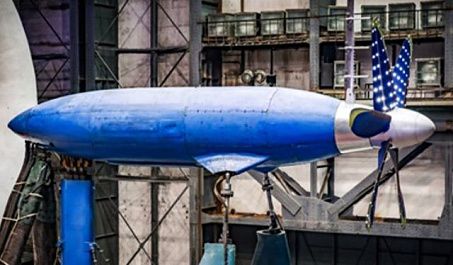Scientists of the Central Aerohydrodynamic Institute named after Professor N.E. Zhukovsky (part of the Scientific Research Center "Institute named after N.E. Zhukovsky") are developing a system of multidisciplinary design of the propeller for the power plant of the aircraft of local air lines. It is designed to combine numerical modeling software tools into a single complex."The uniqueness of the work lies in the formation of a unified approach to solving the problem of designing high-performance propellers that must meet the necessary requirements for operating conditions, resource, weight, noise on the ground, etc.
Creating a multidisciplinary design system, we carried out numerical calculations of the aerodynamic, acoustic and strength characteristics of the propeller, and then bench tests. After comparing the calculated and experimental data, the conditions and possibilities of using a set of modern calculation techniques to determine the parameters of the propeller of a regional aircraft were analyzed. The results of research and development are in demand in our design bureaus when developing new samples of domestic aircraft," said Kirill Anisimov, head of the research Center for the Development of high—performance computing at TsAGI FAU.
The research work is carried out within the framework of the implementation of the state program "Scientific and Technological Development of the Russian Federation". The main goal of R&D is to reduce the time and improve the quality of propeller development through the development of design methods, numerical modeling and multidisciplinary optimization.
Specialists of the research center for the development of high-performance computing of the FAU "TsAGI" under the leadership of Kirill Anisimov, after analyzing the scientific and technical groundwork on this topic, integrated computational methods for determining aerodynamic, acoustic and strength characteristics into a single system of multidisciplinary optimization of the propeller of a regional aircraft. After that, a program was developed that implements the layout of the multidisciplinary design and optimization of the propeller system, as well as interfaces for its integration with the advanced aircraft engineering design system are described.
The next step was the design and manufacture of the test screw. Tests of a composite full-scale propeller were carried out on a screw installation SDU-104M in a large wind tunnel T-101. During the experiment, the thrust and torque of the propeller were measured, as well as the parameters of the stress-strain state of the propeller blades. For this purpose, contactless optical methods of stereovideogrammetry and tensometry were used, as well as for the first time — the SKI-64 telemetry system, developed by specialists of the Department of Measuring Technology and Metrology of the FAU "TsAGI". The SKI-64 provided simultaneous data recording from strain-gaged blades and their transmission via the built-in radio channel to the operator's workplace. The data obtained during the research were used to validate numerical methods.
The results of the research will form the basis of scientific and technical groundwork for the aerodynamic design of promising propellers, taking into account the requirements for aeroacoustics, strength and coordination of the parameters of the aircraft and the power plant.
Next, the specialists plan to verify and validate numerical models for determining the characteristics of the propeller based on more extensive bench and full-scale experimental data obtained on a regional aircraft.
MOSCOW, TSAGI Press Service

